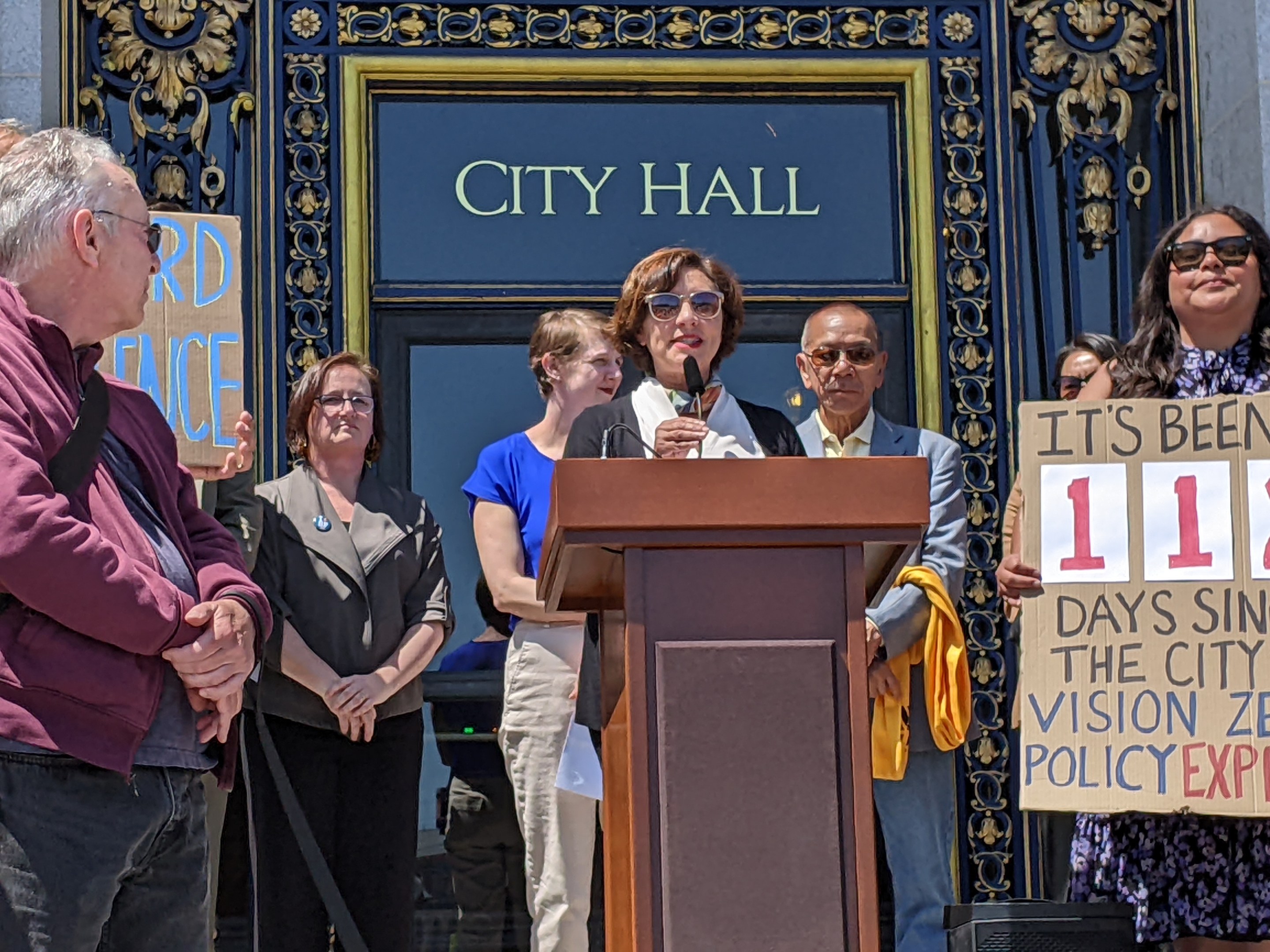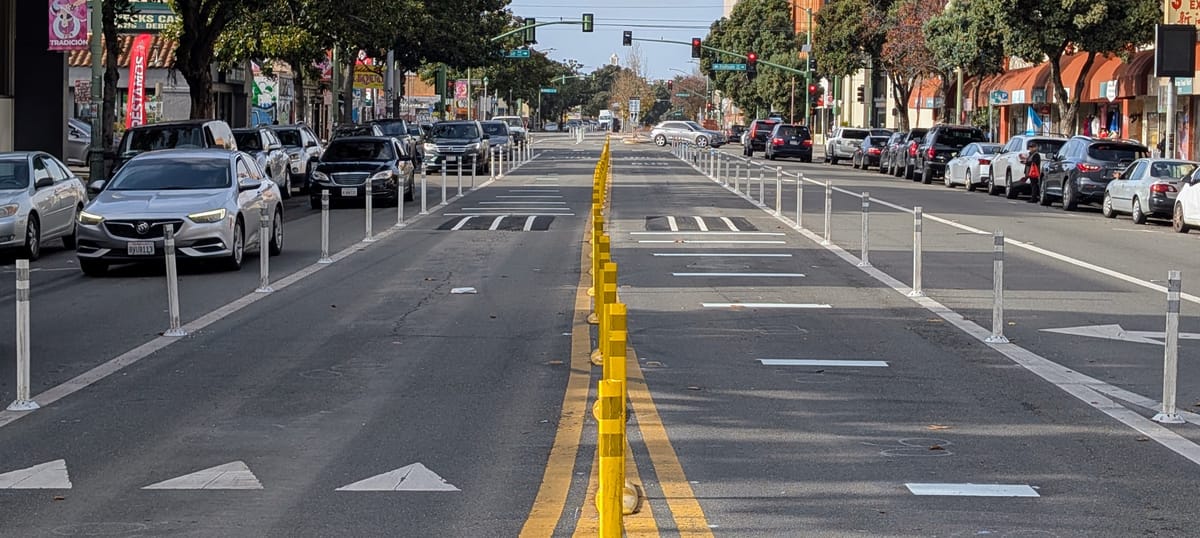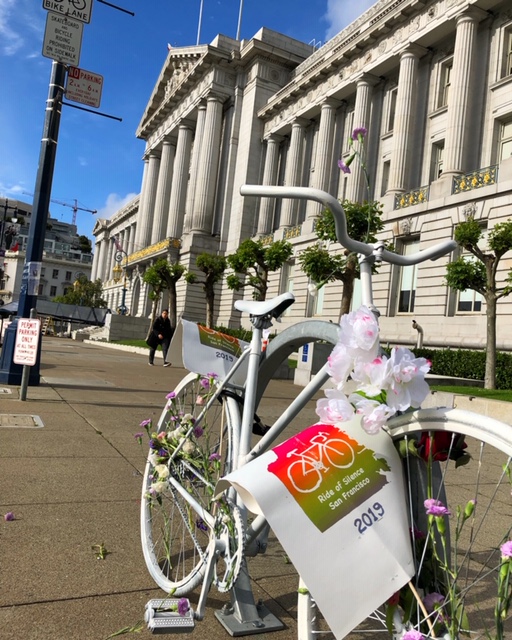A report from the Budget and Legislative Analyst issued last week reveals that in the past five years, San Francisco endured 100,000 traffic collisions, leading to more than 200 lives lost and $2.5 billion in costs. That was the impetus for a rally held Tuesday afternoon on the steps of City Hall, demanding a renewed commitment to the city's Vision Zero goal of eliminating serious and fatal crashes in ten years.
"No amount of money can make up for the loss of human life," said District 7 Supervisor Myrna Melgar, who led the event. But in tight budgetary times, Melgar and the advocates hope that focusing on the financial costs of emergency response, healthcare, and lost productivity attributable to traffic violence can get the city to spend more on safe infrastructure and to recommit to zero pedestrian deaths.
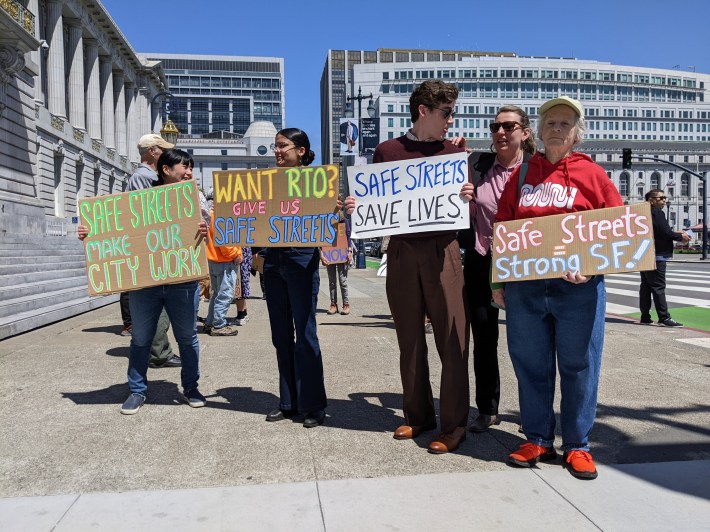
"We can't be desensitized to these deaths," said Tenderloin District 5 Supervisor Bilal Mahmood, who also spoke at the event. He pointed out how the city invested in safety improvements, such as no-turn-on-red, throughout the Tenderloin, instead of just adding features to one or two streets. "I'm requesting that the County Transportation Authority release funds to make it the first fully daylighted district." That district-wide approach has shown measurable improvements in some parts of the city.
Several speakers addressed the fact that the previous commitment to Vision Zero, made in 2014, has objectively failed, with a record 42 traffic deaths in 2024. The most recent one was Monday, April 21, at the intersection of Fillmore Street and McAllister. A hit-and-run driver struck an 86-year-old woman, who died of her injuries four days later.
"The problem is not the goal of zero fatal crashes," explained Kid Safe SF's Robin Pam. "We're not doing enough of the things that work."
In cities across the world that are installing "enough" of those things, such as physical barricades, daylighting, speed cameras, neckdowns, and other tools, Vision Zero has been achieved. But San Francisco suffers from "a collective leadership failure," said Walk S.F.'s Jodie Medeiros.
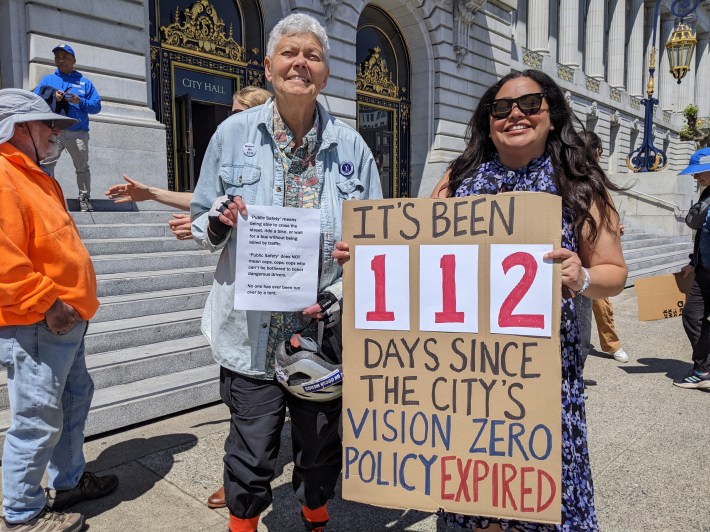
Medeiros also argued that San Francisco won't start to have its long-sought economic recovery until it makes its streets safe and inviting. And that means streets that are comfortable for all, including people not in cars. The Bicycle Coalition's Christopher White told Streetsblog that's why he is against allowing Waymos on Market Street. "It's not about Waymos per se," he told Streetsblog. "It's just detrimental to recovery to have more cars on Market Street."
Streetsblog, of course, couldn't agree more. But readers will recall that last year Melgar, the same one leading this new Vision Zero push, single-handedly blew up a plan to implement a long-sought, SFMTA safety plan in West Portal. That plan was in response to the death of a family of four at the hands of a reckless driver. But Melgar, who was up for re-election last November, bowed to the demands of a handful of merchants who opposed any restrictions on driving through the area. Thanks to that decision, West Portal remains as dangerous as ever.

“The toll of traffic collisions on our city is both human and financial–and the solution is simple: investing to make our streets safer saves lives and saves money," said Melgar in a statement sent to Streetsblog. "Calling for this hearing is an essential first step to finding effective ways to make our streets safer for everyone who uses them and save our city billions of dollars."
